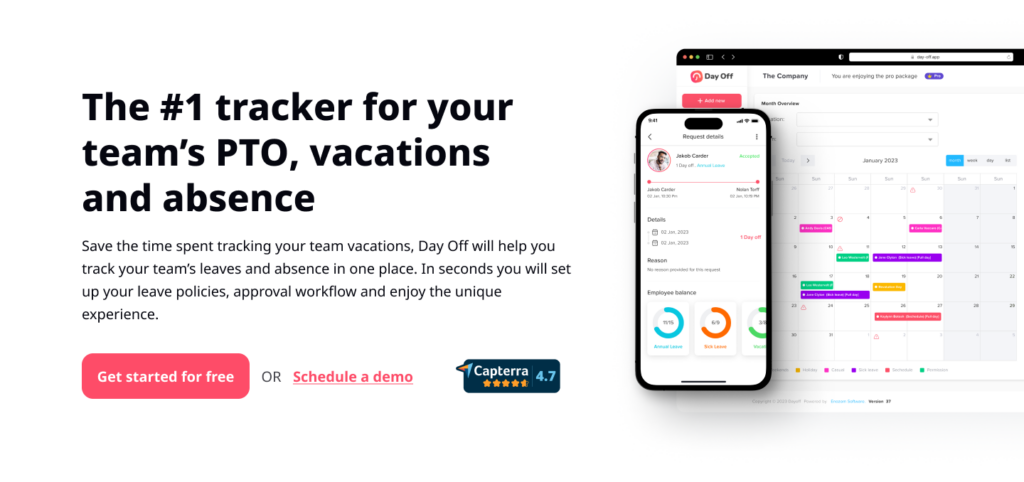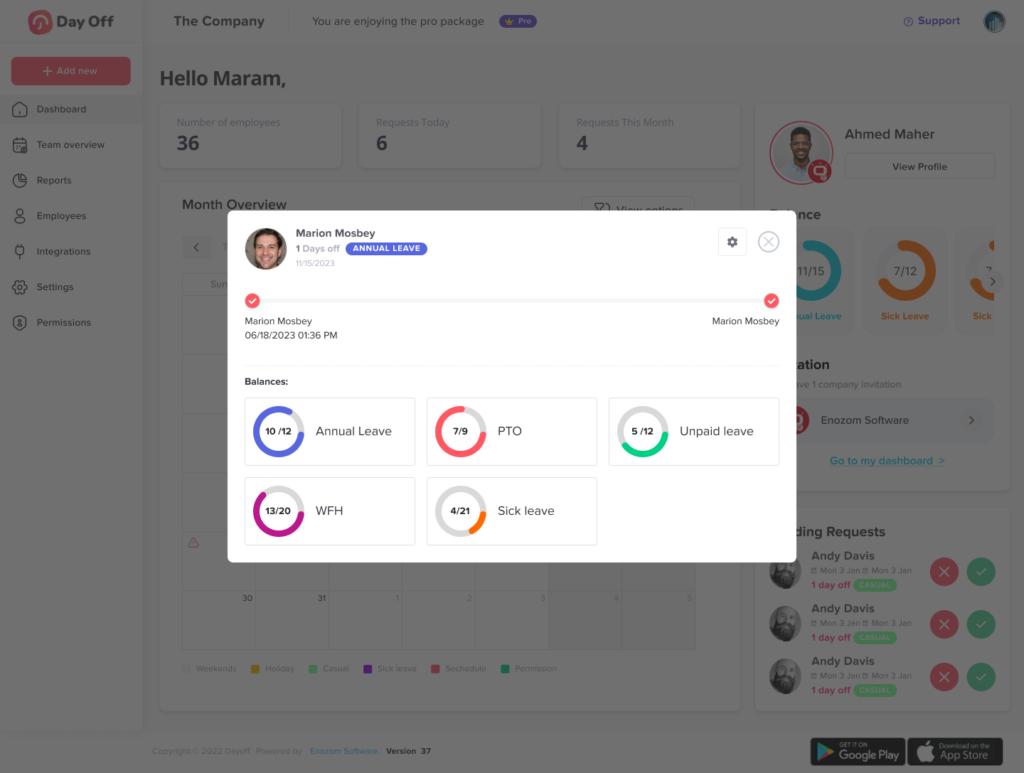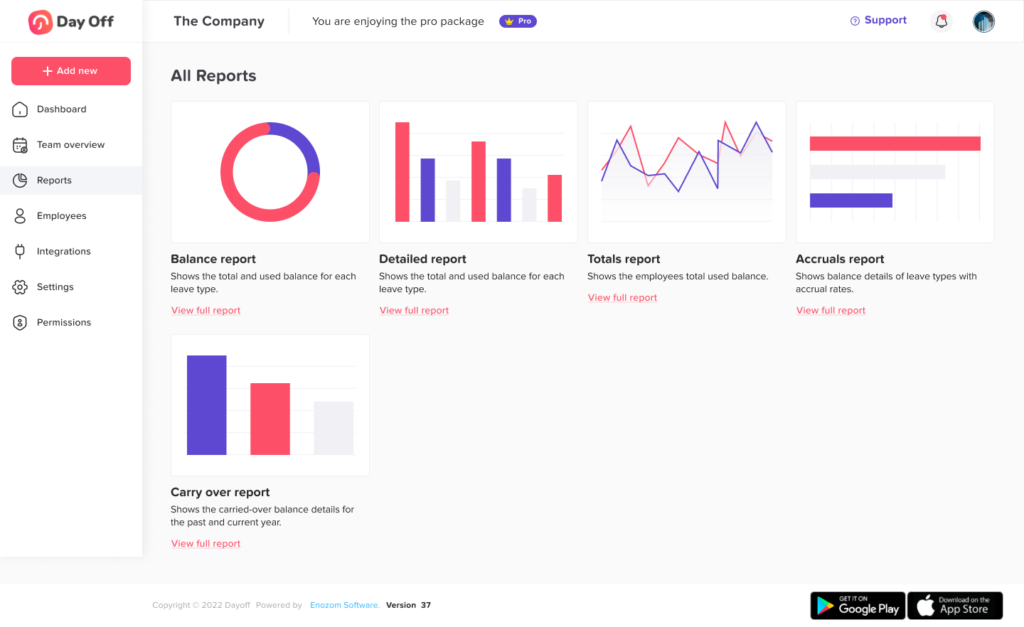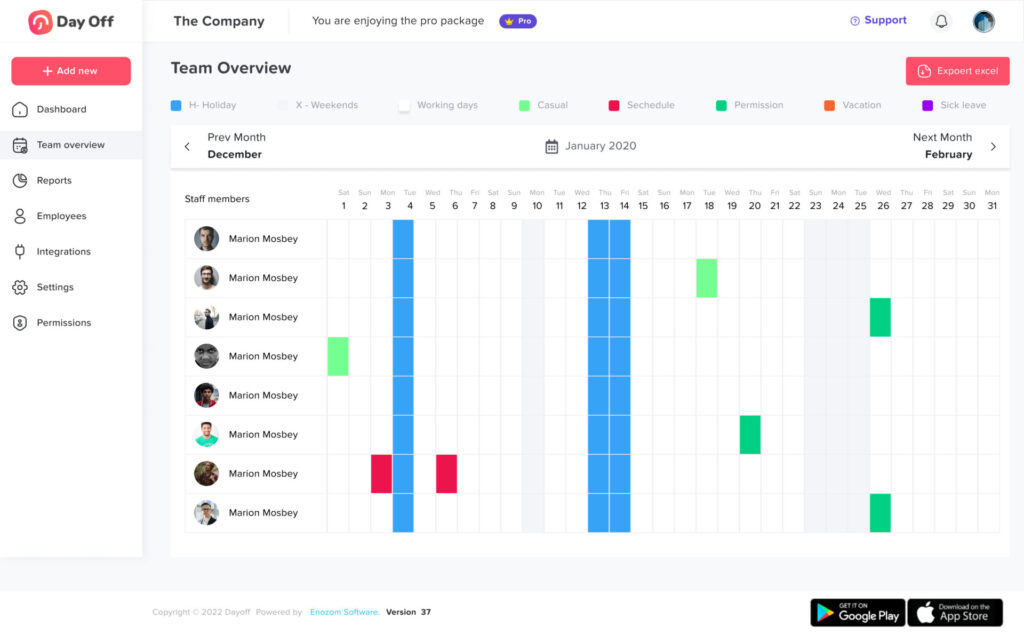In today’s fast-moving work world, it’s important to keep a good balance between work getting done and looking after employee well-being. Managing time off well is key to this balance. Good leave management makes sure work goes smoothly and makes the workplace happier and healthier. We’ll look at simple ways to handle leave that help make a supportive and productive place to work.
1. Establish Clear Leave Policies
The foundation of effective leave management lies in having clear, transparent, and accessible leave policies. These policies should outline the types of leaves available (such as annual leave, sick leave, parental leave, etc.), the process for applying for leave, and any rules or limitations. Clear policies help avoid misunderstandings and ensure that both employees and managers know what to expect.
2. Utilize Leave Management Software
Leveraging technology can significantly streamline the leave management process. Leave management software allows employees to request leaves digitally, and managers to approve them, all within a centralized system. This reduces paperwork, improves tracking accuracy, and provides a clear overview of leave patterns and availability, facilitating better planning and decision-making.
3. Promote a Positive Leave Culture
Encouraging a positive leave culture is essential for a healthy workplace. Employees should feel comfortable taking leaves without fear of judgment or repercussions. This involves promoting work-life balance and recognizing the importance of rest and recovery. Managers play a crucial role in setting the tone for a positive leave culture by leading by example and encouraging their team to take necessary time off.
4. Plan for Absences
Effective leave management involves planning for absences to minimize disruption. This can be achieved through cross-training employees to cover for each other and having a clear handover process for ongoing projects. Planning ensures that work continues smoothly, even when key team members are away.
5. Monitor Leave Trends
Regularly monitoring leave trends can provide valuable insights into employee well-being and potential operational issues. High rates of sick leave, for example, might indicate workplace stress or health concerns that need to be addressed. Understanding these patterns can help managers make informed decisions to improve workplace conditions.
6. Communicate Effectively
Effective communication is vital in managing leaves efficiently. This means keeping all stakeholders informed about leave policies, individual leave requests, and any changes in staffing due to absences. Clear communication helps manage expectations and reduces the potential for conflict or confusion.
7. Offer Flexible Working Arrangements
Offering flexible working arrangements, such as remote work or flexible hours, can complement leave management. Flexibility allows employees to manage their work and personal commitments more effectively, potentially reducing the need for formal leaves and contributing to overall job satisfaction and productivity.
8. Support Return to Work
Supporting employees in their return to work after an extended leave is crucial for their reintegration into the team. This can include offering catch-up sessions, providing updates on any changes that occurred during their absence, and gradually reintegrating them into their workload. A supportive return process helps employees feel valued and reduces stress.
9. Continuously Review and Improve
Leave management practices should not be static. Regularly reviewing and seeking feedback on leave policies and practices can identify areas for improvement. This iterative process ensures that leave management evolves to meet the changing needs of the workforce and the organization.
Day Off Leave Tracker
Day Off is the #1 free Vacation tracking software, designed to manage all aspects of Time Off, PTO, vacations, and leave tracking. Minimize the time consumed in preparing time off reports and create your free account now to manage your team’s PTOs, vacations, and absences.

Day Off Leave Tracker is an invaluable tool in implementing many of the leave management tips mentioned earlier, contributing significantly to a happier, healthier workplace. Here’s how it can help:
1. Enhancing Transparency and Accessibility
day off leave tracker provides a clear, accessible view of leave balances, requests, and approvals for both employees and managers. This transparency helps in setting clear expectations and reduces misunderstandings related to leave policies.
2. Streamlining Leave Management Process

With a leave tracker, the process of requesting, approving, and tracking leaves becomes streamlined. Employees can easily request time off, managers can quickly review and approve requests, and HR can monitor leave patterns—all in one centralized system. This efficiency reduces administrative burdens and allows more focus on core activities.
3. Facilitating Better Planning and Decision Making
A comprehensive leave tracker provides real-time insights into who is on leave and when. This visibility enables better planning and resource allocation, ensuring that workloads are managed effectively, and project timelines are met, even in the absence of key personnel.
4. Supporting a Positive Leave Culture
By simplifying the leave request and approval process, day off PTO tracker encourages employees to take advantage of their leave entitlements without hassle. This ease of use supports a culture where taking necessary time off for rest and recovery is normalized and encouraged.
5. Identifying Trends and Insights

Advanced leave trackers can offer analytics and reporting features, providing valuable insights into leave trends. This data can help identify issues such as frequent absenteeism, burnout risks, or departmental imbalances in leave usage, enabling proactive measures to address potential problems.
6. Promoting Work-Life Balance
By making it easier for employees to manage their leave, day off leave tracker supports better work-life balance. Employees can plan their leaves in advance, ensuring they have adequate time for rest, personal pursuits, and family time, contributing to overall well-being and job satisfaction.
7. Ensuring Compliance
Leave trackers can be configured to comply with local labor laws and company policies, ensuring that leave entitlements are correctly applied and that the company remains compliant with regulatory requirements. This reduces the risk of legal issues related to leave management.
8. Reducing Conflicts and Misunderstandings

With a clear record of leave requests and approvals, day off minimizes the potential for conflicts and misunderstandings between employees and management. This clarity can enhance trust and communication within the workplace.
9. Facilitating Flexible Working Arrangements
Incorporating features for tracking different types of leaves and flexible working arrangements, such as remote workdays or half-days, a leave tracker can support modern work practices. This flexibility can make a significant difference in accommodating employees’ diverse needs and preferences.
10. Streamlining Return-to-Work Processes
For employees returning from extended leaves, a leave tracker can help managers plan their reintegration, ensuring a smooth transition back to work. It can provide an overview of any major changes or projects that occurred in their absence, helping to update and prepare the returning employee effectively.
Implementing Day Off Leave Tracker as part of your leave management strategy can significantly enhance operational efficiency, employee satisfaction, and overall workplace health. By leveraging technology to manage leaves effectively, organizations can create a more supportive, transparent, and efficient work environment, contributing to both employee well-being and organizational success.
Conclusion: Better Leave Management
Effective leave management is a critical component of a happier, healthier workplace. By establishing clear policies, leveraging technology, promoting a positive leave culture, and continuously seeking improvement, organizations can support their employees’ well-being while maintaining productivity and operational efficiency. Remember, a workplace that values and manages employee time off is one that fosters loyalty, satisfaction, and success.
